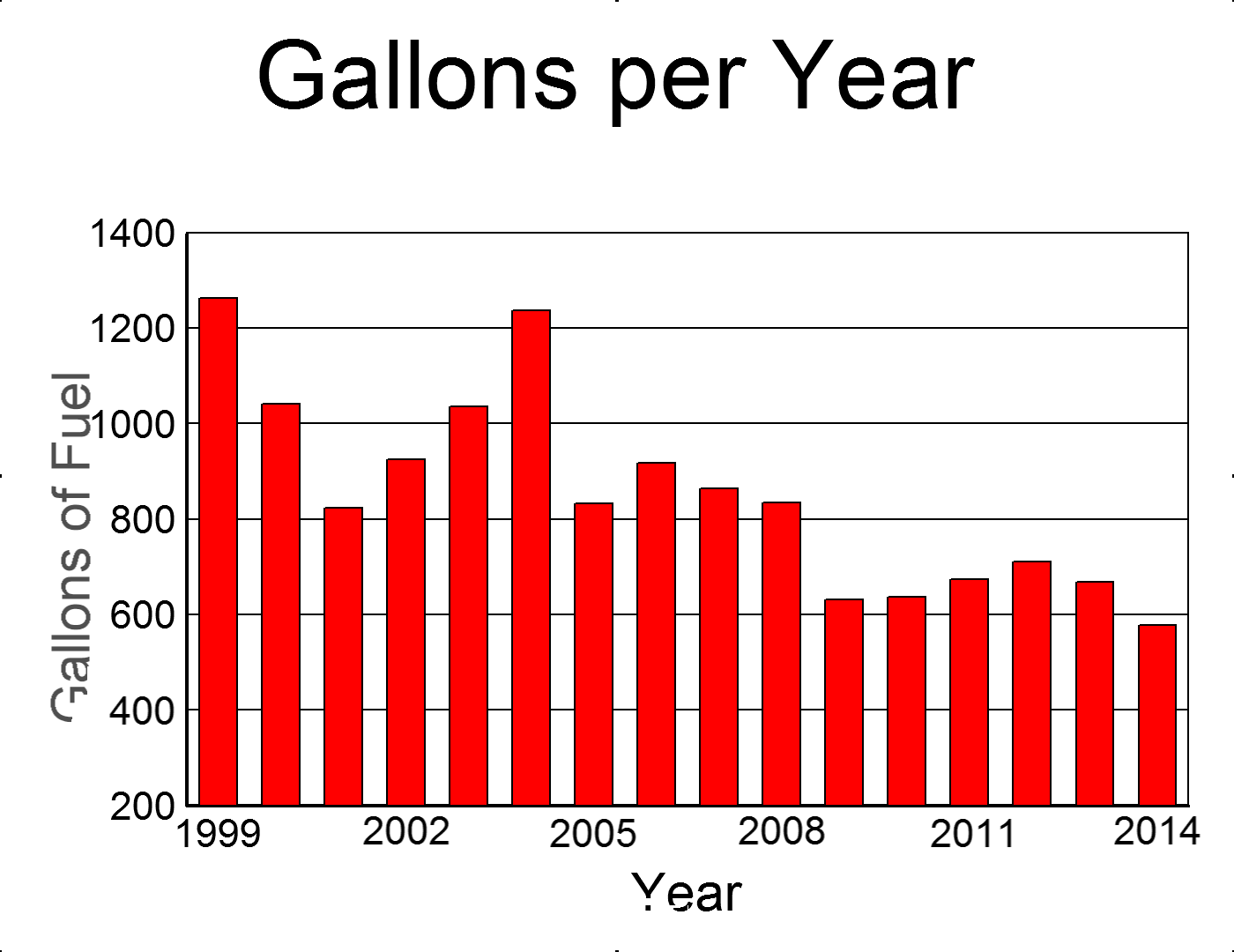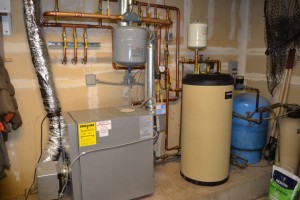This is an ongoing story with a nailbiting middle and an unknown end. The proper subtitle might instead be the good old days, the ugly, the bad, and bring us the new good already.
The beginning came when we moved into this house. It is heated with a fuel-oil boiler, which is common in Fairbanks. The house is over 3,000 square feet and includes a heated garage—which sounds like a luxury until you’ve had one for awhile and recognize its importance for vehicles and work during our long winters.
Rapidly increasing energy costs in 2005 made it critical to pay close attention to ways that we might lower our fuel-oil consumption. Back in 1999, we were paying 72 cents a gallon for fuel oil. Those were the good old days! In 2005 it was up over $2 a gallon, and in late 2008 it went up to over $3 a gallon. At its peak (so far), fuel oil was $4.07 a gallon in May 2012. This is more than a five-fold increase in heating costs in a climate that demands a lot of heat to keep humans comfortably alive (a condition we desire to prolong). Now, imagine that you are using 1,000 or more gallons of fuel oil each year. This increase in heating costs was serious money—this is the ugly and nailbiting part of the story.
In 2005 we began to use the wood stove for more than the occasional cold weather heating boost. We turned down the thermostat and warmed up the house each evening with wood. In 2008 we took advantage of a new state program to subsidize home energy upgrades. Before we embarked on our upgrades, we did a fair amount of research. But nothing provided the focus on what needed to be done like the energy audit. A knowledgeable guy came over and put a vacuum chamber on an outer door, then walked through the house while feeling for drafts and noting the nature and quality of our exterior features: windows, doors, crawl space, and walls. The report that he and his software produced gave us the blueprint for how we would go about maximizing energy savings for every dollar invested in upgrades.
This report ranked specific upgrades by savings-to-cost ratio. The higher the number, the more bang for buck we’d get. Each upgrade was also given a “Ratings Points Gained” value for how much it would add to the total home energy rating. The output was separated into “Cost-effective Improvements” and improvements not found to be cost effective. The estimated cost for installing each upgrade was overly optimistic for Fairbanks, but the general outline was convincing both from the data collected and from the rebate program: your reimbursement was based on what you’d done in relation to the pre-upgrade energy audit and on the results of a post-upgrade audit. Marching orders, baby! But you got to choose the tune based on the audit’s suggestions.
We did everything on the cost-effective improvements list. Those we could do ourselves, we did: installing automated set-back thermostats, insulating around the perimeter of the ceiling of the crawl space, and insulating using two-inch foam board to the interior or exterior side of the crawl space wall. Some of the latter was inside (much easier), and some was outside (see here for a later episode). While these projects presented some challenges (for example, the crawl space can be crippling), we had fun doing them, because we knew that we’d reap handsome financial rewards for the effort in terms of fuel savings. The jobs we couldn’t do ourselves we found local companies to do for us: replacing the boiler with a more fuel-efficient model and replacing the garage door. We did one thing on the non-cost-effective list; we replaced the oil-fired water heater with a new side-arm style one. Coupled with the boiler replacement, this seemed like a no-brainer because we didn’t think the old one was performing well. So the last may have been just a psychological replacement, but at an estimated -$32/year the numbers indicated that it was cost effective after all.
How did it turn out? Well, I am a scientist, so naturally I’ve kept track. When you spend thousands and thousands of dollars (albeit partially reimbursed) on upgrades to save money, you want to know how well those savings are accumulating. The short version: we are using about half as much fuel oil now as we were during our first years here. This is the result of wood heat and upgrades combined. In the annual graph of fuel-oil use, you can pick out when we began to more seriously burn wood (2005) and when we did the energy upgrades (late 2008).
A recent study found that energy conservation upgrades in a Michigan program (popular article here and original paper here) did not pay for themselves: costs exceeded actual savings, and the projected benefits were overly optimistic. In contrast, for us the upgrades and the program that promoted them have been tremendously beneficial.
Our original energy audit estimated that we’d see an annual C02 reduction of 20,318 pounds per year if the cost-effective improvements were implemented. I will tackle that another time; I think it was overly optimistic. But we have generated considerable savings in gallons of fuel oil not burned. By my ongoing calculations, since the upgrades we’re saving on average about 400 gallons a year (about $113/month), and the total time estimated for those savings to equal the upgrade costs is 8.5 years. These values fluctuate with fuel costs and weather.
So, while we haven’t returned to the good old days of annual heating costs commensurate with 72 cent/gallon fuel oil, we have substantially lowered our carbon footprint and are saving a lot of money each year. Lower energy costs are good. We’re still looking for the Very Good, though: WE WANT NATURAL GAS!!! For a state so rich in this natural resource, it sure has been slow to get here. It’s been all talk, talk, talk – until now. When our current governor, Bill Walker, came into office, he and his administration began pushing hard, and now we’re seeing some movement.
Problems? Yes. In the short term, we’d been a little too enthusiastic in insulating the crawl space. Shortly after the boiler installation, during a nice holiday weekend when it was fairly cold, we’d been home running the wood stove constantly and so the boiler hadn’t come on. The consequently stationary water in one part of the heating pipes in the crawl space froze. We’d insulated it up into the living space, but it was too close to the outer wall and needed crawl-space warmth to stay liquid. Fortunately, a smart furnace technician figured it out before any pipes burst (we thought it was a defective zone valve).
High spots? Despite our desire for natural gas, we love our Viessmann Vitorond 100 triple-pass, oil-fired, hot-water boiler. That beauty purrs and grumbles away in the garage at about 87% efficiency. Of course, we like it even more when the Blaze King Princess’s hot personality keeps the boiler in check, because wood is vastly cheaper than fuel oil.
Anyway, this is a condensed version of heating in the subarctic with more than 16 years of data. We’re satisfied with our current trajectory given available fuel sources. We’ve discussed the cost-effectiveness of going over to coal, but we’re not happy with the environmental costs that entails and so for now have scratched that from our list of possibles (it would require some infrastructure changes, too). The next change is, we hope, natural gas. We watch that horizon with great hope.



Pingback: Hauling Logs in From the Boombah | Notes From Beringia
You’re funny – who keeps all that data?!
We just hang onto receipts. The fuel oil ones are key, and we pay close attention to that gallons box on the bill. I started entering them into a spreadsheet when costs began to really go up and then paid closer attention when we began to seriously use wood to see what the impact was. Now I just revisit it all once a year, entering new data and recalculating the costs-to-savings trajectory. It’s a long, slow game.
Good info. Fun read. I love keeping up with your projects in written form,where I can peruse and understand at my leisure!
Count me the first of your dozen (s) (of) followers!
Glad you enjoyed it. It may be the most boring post I’ve written, except for a few afficionados interested in the details of how we stay warm.